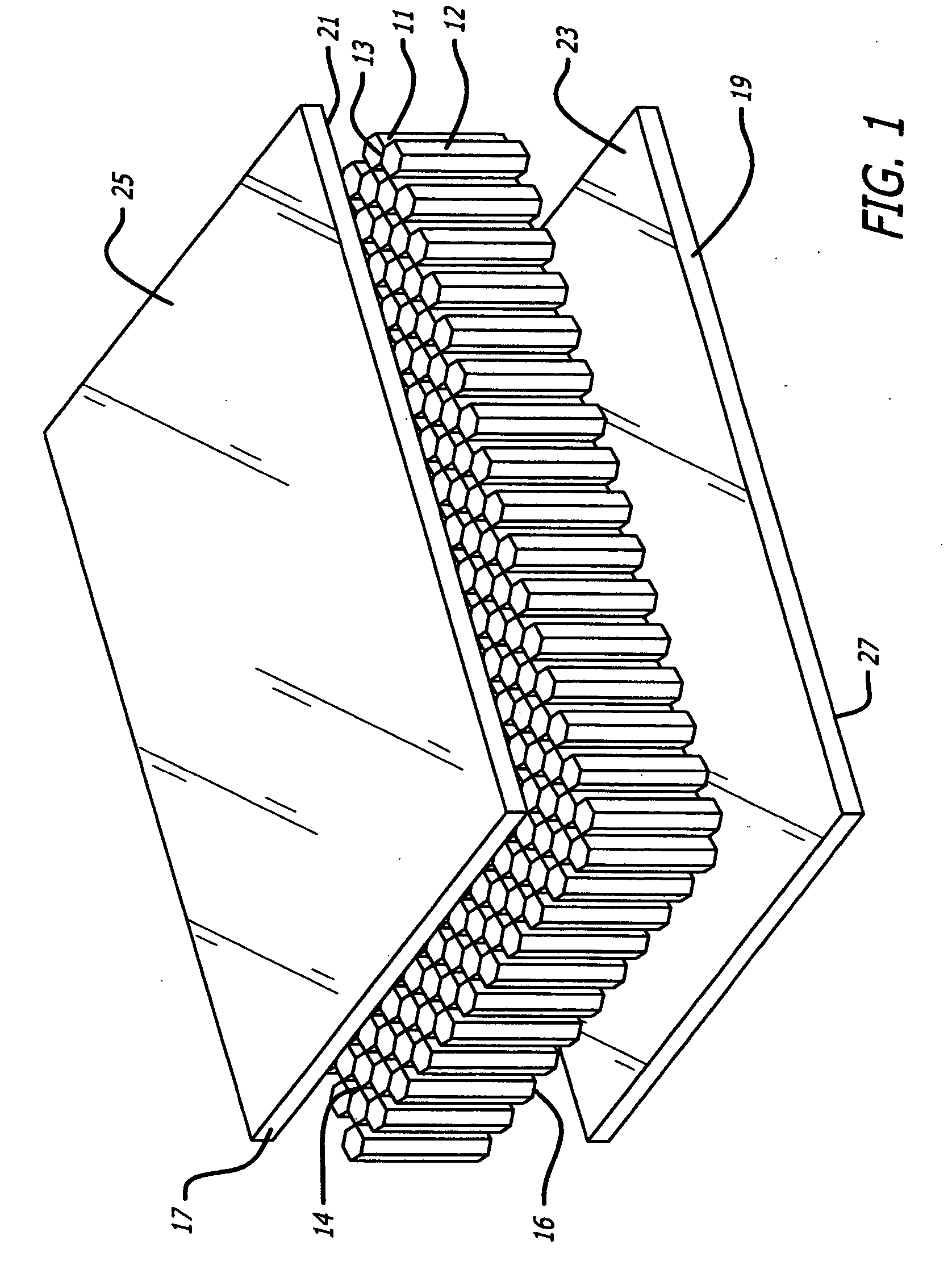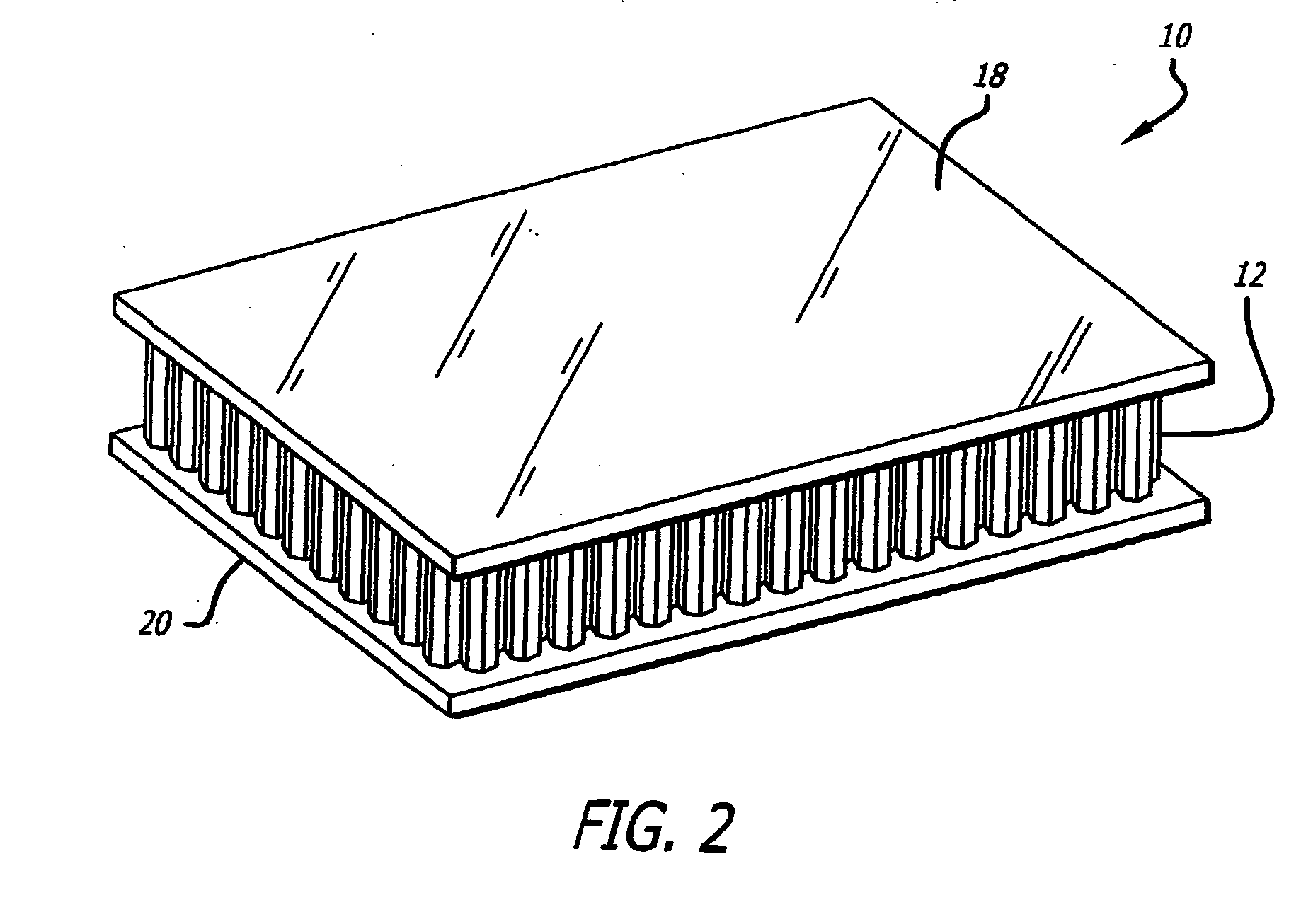Bismaleimide prepreg systems
a technology of bismaleimide and prepregnation method, which is applied in the field of prepreg systems, can solve the problems of low damage tolerance, low tack, and difficult to accurately control the amount of resin applied to the fibers, and achieves good tack, flexibility, and resin flow and storage characteristics
- Summary
- Abstract
- Description
- Claims
- Application Information
AI Technical Summary
Benefits of technology
Problems solved by technology
Method used
Image
Examples
example 1
[0038] A 300 grams of prepreg resin in accordance with the present invention was made using the following ingredients: A) 58.4 weight percent COMPIMIDE®353 as the eutectic bismaleimide mixture; B) 31.5 weight percent TM124 as the co-curing agent; C) 0.1 weight percent hydroquinone; D) 1.0 weight percent polyethylene oxide (molecular weight 2,000,000 Daltons; less than 80 mesh) as the resin flow stabilizer; and E) 9.0 weight percent P84 (425 mesh) as the thermoplastic toughening agent.
[0039] Ingredients A, B, C and D were mixed in a kettle and heated to 200° F. A vacuum was then applied and the mixture heated to 225° F. for 10 minutes until all four ingredients were dissolved and then cooled to 180° F. Ingredient E was then added in 6 increments to the A / B / C / D mixture as it was heated to 190° F. This final mixture was held at 180° F. to 190° F. (under vacuum) for 15 minutes. The mixture was cooled to ambient temperature to provide the final prepreg resin.
example 2
[0040] The prepreg resin made according to Example 1 was used to impregnate the following carbon fibers: A) IM7G 12K carbon tape available from HEXCEL CORPORATION (Dublin, Calif.), which has a fiber areal weight of 145 gsm; and B) T300 3K PW plain weave carbon fabric available from HEXCEL CORPORATION (Dublin, Calif.), which has a fiber areal weight of 194 gsm. The carbon tape prepreg had a resin content of 33 weight percent. The carbon fabric prepreg had a resin content of 40 weight percent. The prepregs had good tack and flexibility. The prepreg resin remained stable and did not flow away from the fibers or otherwise redistribute itself during short-term storage (up to 10 days) at ambient conditions and long-term storage at 32° F. Multiple layers both types of prepregs where placed together to form uncured laminate structures. The laminate structures were cured under 85 psi autoclave pressure at temperatures on the order 375° F. for about 4 hours to produce cured laminates. These l...
example 3
[0041] Woven fabric prepregs made according to Example 2 are bonded to a HRH®36 honeycomb core to form a sandwich panel in the same manner as shown in FIGS. 1 and 2. The prepregs have two plies of plain weave fabric and an areal weight of 193 gsm. The uncured prepreg is applied to each edge of the honeycomb using a bismaleimide adhesive and cured under the same conditions as Example 2, except that the autoclave pressure is about 45 psi. The panels that are formed using the above procedure have face sheets that are void-free and securely bonded to the core.
PUM
| Property | Measurement | Unit |
|---|---|---|
| thick | aaaaa | aaaaa |
| sizes | aaaaa | aaaaa |
| molecular weight | aaaaa | aaaaa |
Abstract
Description
Claims
Application Information
 Login to View More
Login to View More - R&D
- Intellectual Property
- Life Sciences
- Materials
- Tech Scout
- Unparalleled Data Quality
- Higher Quality Content
- 60% Fewer Hallucinations
Browse by: Latest US Patents, China's latest patents, Technical Efficacy Thesaurus, Application Domain, Technology Topic, Popular Technical Reports.
© 2025 PatSnap. All rights reserved.Legal|Privacy policy|Modern Slavery Act Transparency Statement|Sitemap|About US| Contact US: help@patsnap.com


